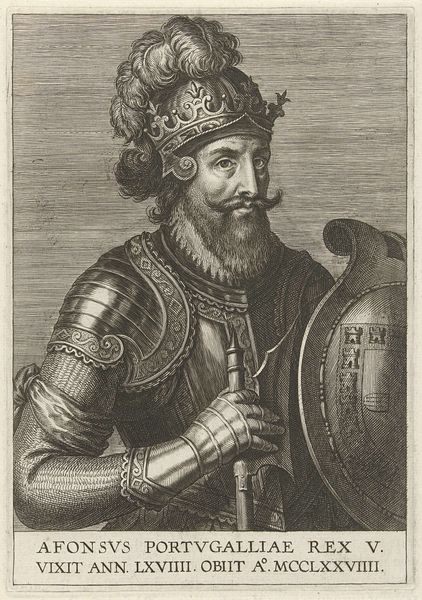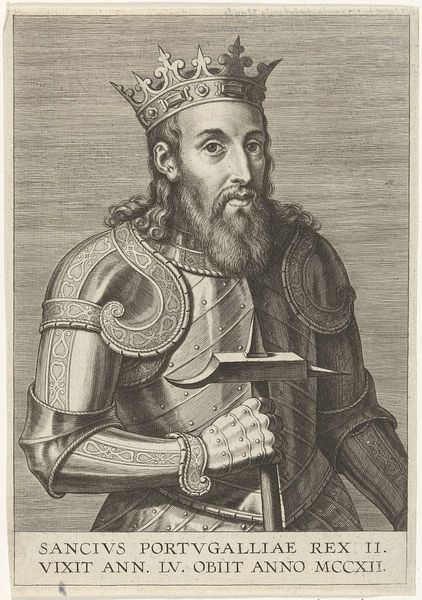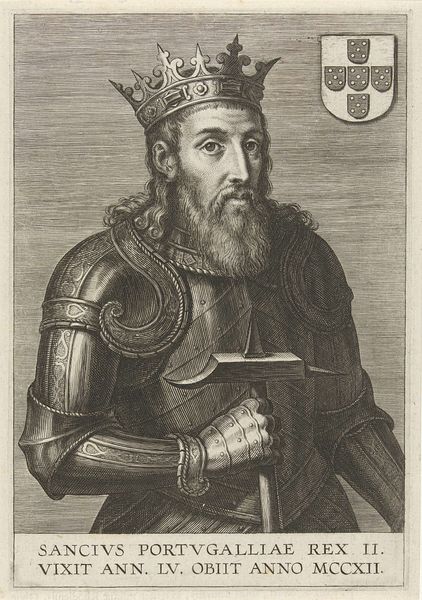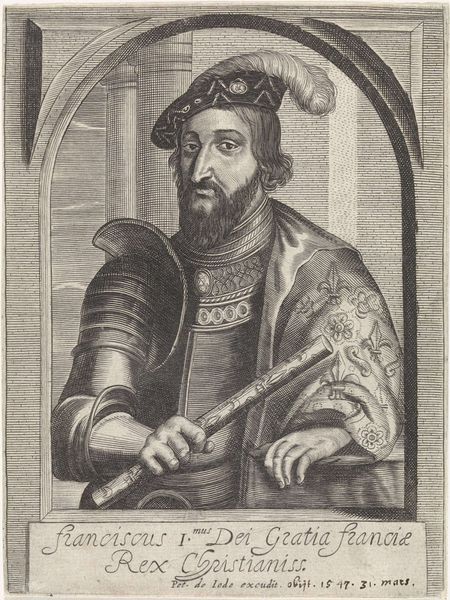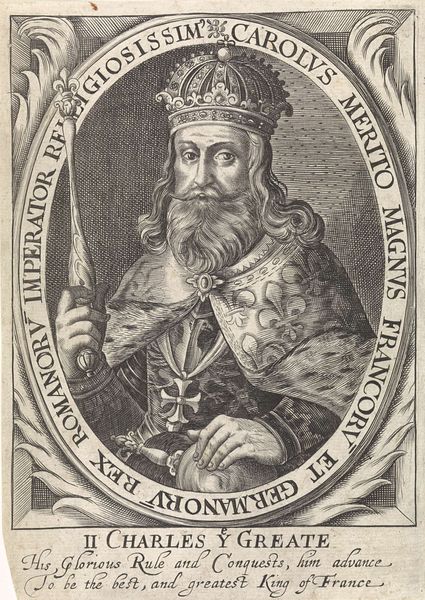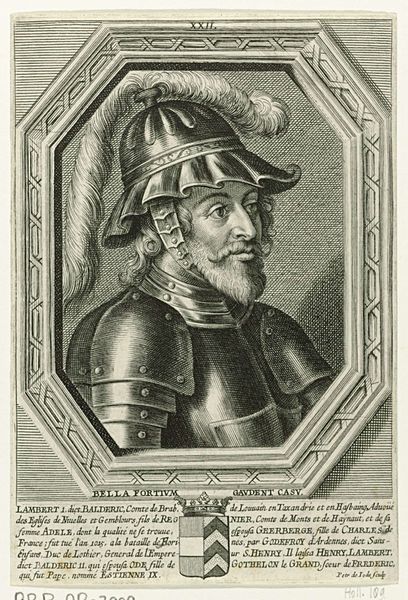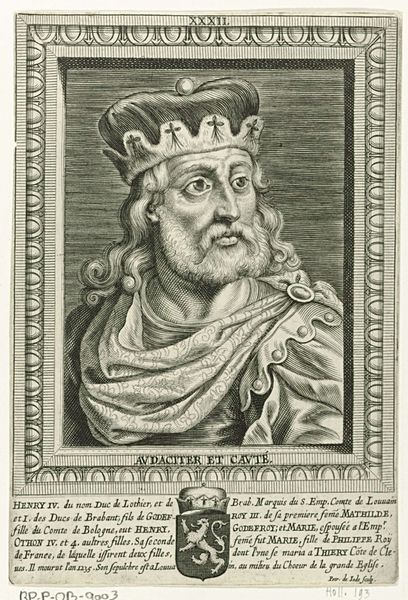
print, engraving
#
portrait
#
baroque
# print
#
old engraving style
#
caricature
#
portrait drawing
#
history-painting
#
engraving
Dimensions: height 190 mm, width 132 mm
Copyright: Rijks Museum: Open Domain
Curator: Here at the Rijksmuseum, we have a print dating from after 1621, "Portret van koning Alfons V van Portugal", made by Cornelis Galle I. Editor: What strikes me is the sheer weight of it all! You can almost feel the density of the armor, the beard...even the crown looks heavy on his head. There’s something imposing, yet melancholic in his gaze. Curator: That’s interesting because this print would have circulated widely. The availability of engravings allowed for broader access to historical portraits, turning political figures into commodities for a burgeoning market, beyond the elite. We can see how production changed the social circulation of such images. Editor: So it's almost a brand? An early form of PR, or even propaganda, accessible to the masses. But looking at his armor, that lion’s head emblem on his shoulder… there's something timeless about these symbols of power, no? It's all beautifully, if meticulously, rendered. All those tiny lines create so much depth. It seems almost ironic that something intended for wide circulation would also have so much finely detailed craftsmanship. Curator: Indeed, it shows the artist using a precise technique that speaks to his craft; the creation of this plate likely involved several skilled laborers. These kinds of Baroque portrait prints are key to understanding the production, circulation, and consumption of royal imagery in that era. The prints act as multiples allowing far reaching influence of the sitter in a way paintings just could not offer. Editor: I see it! Looking closer at the technique… it’s amazing. Curator: So the process gave power to these types of objects through a wider consumption, creating new social possibilities for these kind of representations. Editor: Makes me wonder who owned it back then. Did someone tack it above their hearth as a sign of loyalty, or just admire it for the skill? A very interesting character. Thank you.
Comments
No comments
Be the first to comment and join the conversation on the ultimate creative platform.

